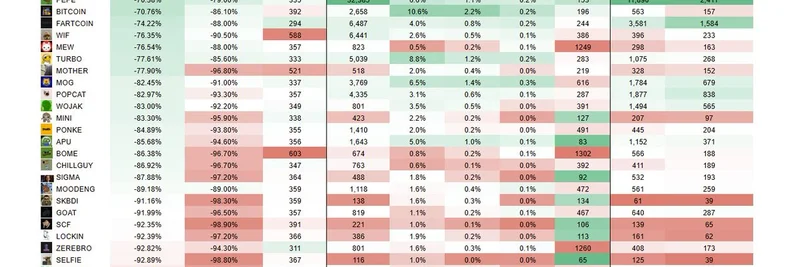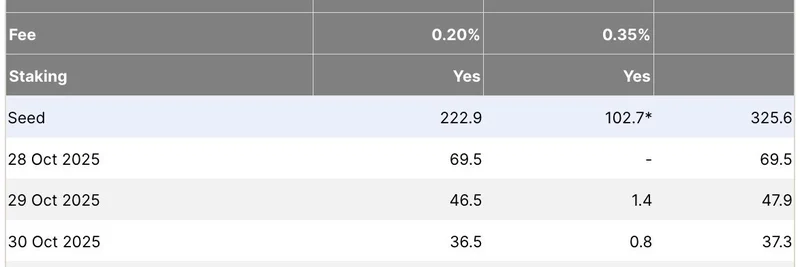Hey there, crypto enthusiasts! If you’ve been scrolling through X lately, you might have stumbled across a buzzworthy post from BSCNews about Huma Finance. Posted on August 5, 2025, at 01:34 UTC, the tweet asks a tantalizing question: “Is the world's first PayFi network about to take crypto by storm…?” With a link to a full analysis, it’s clear this is a topic worth digging into. Let’s break it down and see what makes Huma Finance a potential game-changer in the crypto world—especially for those of us keeping an eye on meme tokens and beyond!
What Exactly Is PayFi and Huma Finance?
First things first: what’s PayFi? Short for “Payment Finance,” PayFi is a blockchain-based system that lets users access future cash flows instantly. Think of it like getting paid today for work you’ll finish next month—without the usual delays or hefty fees. Huma Finance is pioneering this space as the world’s first PayFi network, launched in 2022 from Cupertino, California. It uses blockchain tech to connect payment receivables with global capital, offering instant liquidity to businesses and individuals alike.
Imagine a small business owner in Mexico waiting 45 days for a $50,000 payment. With Huma, they could get that money right away, avoiding cash flow headaches. This isn’t just a niche idea—Huma’s tackling big issues like slow payment processing (3-5 days even in developed markets), high overseas transfer fees (around 6.5% per the World Bank), and the 1.7 billion unbanked people worldwide. By using stablecoins and smart contracts, Huma settles payments in real-time, cutting costs and opening doors for everyone.
The Tech Behind the Magic
So, how does Huma pull this off? At its core is the Time Value of Money (TVM) model. This fancy term basically means Huma turns future expected payments into cash you can use now. Here’s how it works in simple terms:
- Income Pattern Analysis: Huma’s algorithms look at your past transactions to predict future cash flows.
- Risk Assessment: It checks payment history and market conditions to decide how much to advance.
- Automated Valuation: Smart contracts then offer 70-90% of that expected value as a loan—no collateral needed!
This system unlocks about $4 trillion sitting idle in global prepaid accounts, making it a goldmine for efficiency. Plus, Huma’s unsecured lending uses smart contracts to slash administrative costs by up to 80% compared to traditional banks. With a 0% default rate (thanks to smart risk management), it’s proving its worth.
Huma runs on multiple blockchains like Solana (super fast and cheap), Stellar (great for cross-border payments), and Ethereum Layer 2s (like Polygon and Scroll). This multi-chain approach, paired with stablecoins like USDC, keeps things running 24/7 without the middlemen dragging things down.
Huma 2.0: The Big Upgrade
In April 2025, Huma rolled out its 2.0 platform on Solana, and it’s a beast. This upgrade is permissionless—meaning anyone can jump in without approval—and offers stable, double-digit yields (10.5% APY in USDC as of May 2025). That’s a sweet deal compared to the measly 1% from traditional savings accounts!
Huma 2.0 also introduces two modes for users:
- Classic Mode: Earn 10.5% APY plus “Huma Feathers” (reward points) with multipliers based on lock-up periods (1x for no lock-up, 3x for 3 months, 5x for 6 months).
- Maxi Mode: Focus on stacking Feathers (5x no lock-up, 10.5x for 3 months, 17.5x for 6 months) if you’re betting on future token rewards.
Then there’s the PayFi Strategy Token ($PST), a yield-bearing token that works with Solana DeFi protocols like Jupiter for swapping. Within two weeks of launch, users dumped $25 million into Huma 2.0, and it’s now got over 33,000 depositors. That’s some serious hype!
Why It Matters for Crypto and Meme Token Fans
You might be wondering, “What’s this got to do with meme tokens?” Well, while Huma isn’t a meme coin itself, its innovation could ripple through the crypto ecosystem—including the wild world of meme tokens. As a stable, yield-generating platform, it could attract investors looking for safer bets to balance their risky meme coin portfolios. Plus, with $4 billion in transactions and a $38 million Series A funding round (backed by big names like Circle and Stellar Foundation), Huma’s credibility could draw more eyes to DeFi—and maybe even inspire meme token projects to explore PayFi ideas.
Huma’s also big on financial inclusion, helping unbanked folks join the crypto economy. That’s a narrative that could fuel community-driven tokens, a hallmark of meme coins. If Huma succeeds, it might pave the way for more accessible DeFi tools, potentially boosting the next meme coin cycle.
The Future Looks Bright
Huma’s not slowing down. It’s aiming for $2 billion in credit origination by the end of 2025 (up from $100 million in 2023) and plans to expand across more blockchains like Polygon or BNB Chain by 2026. The $PST token might even get governance rights, letting users shape the platform. And with rumors of a potential airdrop swirling on X, the community’s buzzing with excitement.
Final Thoughts
Huma Finance is more than just a crypto trend—it’s a potential revolution in how we handle money globally. With its PayFi network processing $4 billion and attracting thousands of users, it’s clear the market’s hungry for this kind of innovation. Whether you’re into meme tokens or just exploring DeFi, keeping an eye on Huma could pay off. Head over to huma.finance or follow humafinance on X to join the 33,000+ depositors shaping the future!
Got questions or thoughts? Drop them in the comments—we’d love to hear from you! And if you’re into the latest meme token news, stick around at Meme Insider for more juicy updates.



